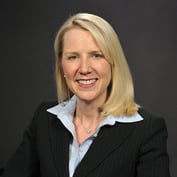Back in September, the SEC fined First Eagle Investment Management some $40 million for, according to an SEC statement, “…inappropriately [using] money belonging to the shareholders of the funds to pay for services clearly intended to market and distribute the shares.” (See SEC Fines First Eagle, by Bernice Napach)
Here’s how Julie Riewe, co-chief of the Enforcement Division’s Asset Management Unit described the action: “Mutual fund advisors have a fiduciary duty to manage the conflict of interest associated with fund distribution. And First Eagle breached that fiduciary duty by using the funds’ assets rather than its own money to pay for distribution…” Added SEC Director of Enforcement Andrew Ceresney: “Unless part of a 12b-1 plan, the firm should bear those costs, not the shareholders.”
The case against First Eagle was the first action under a new SEC initiative to “protect investors from improperly paying mutual fund distribution fees.” Apparently, this “initiative” uncovered so many infractions (I’m just speculating here), that the Commission felt the need to issue a “guidance” warning fund advisors to pay closer attention to just what fund investors are actually paying for.
This was on top of the $40 million “warning” that First Eagle had to repay its investors. However, without also having to pay an additional penalty, it’s a bit hard to see this as much of a deterrent for future mutual fund company behavior.
The “guidance” notes that mutual fund fees “have a direct impact on investor returns,” and that “investors may evaluate funds based on the specific levels of 12b-1, management, and other fees, [so] potential mischaracterization of fees may lead them to invest in funds that they would not otherwise have selected.” (See Melanie Waddell’s SEC Warns Advisors to Pay Closer Attention to 12b-1, Distribution Fees.)
To my mind, the First Eagle fine and the SEC’s guidance raise so many questions I don’t know where to start. I suppose I should first point out (to head off any comments already forming in your head): No, I’m not surprised by First Eagle’s actions.
In fact, I can imagine the following reaction by a mutual fund executive who’s been recently elevated to partner in the firm, after getting an explanation of how the business actually works: “Now, wait a minute. You mean we can pay ourselves millions of dollars and expense those costs back to the shareholders; expense all our other overhead; AND charge the shareholders for the costs of marketing the funds, too? What a business!” Deducting an item or two that may fall into a gray area has to be pretty tempting.








 January 13, 2016 at 05:12 AM
January 13, 2016 at 05:12 AM










